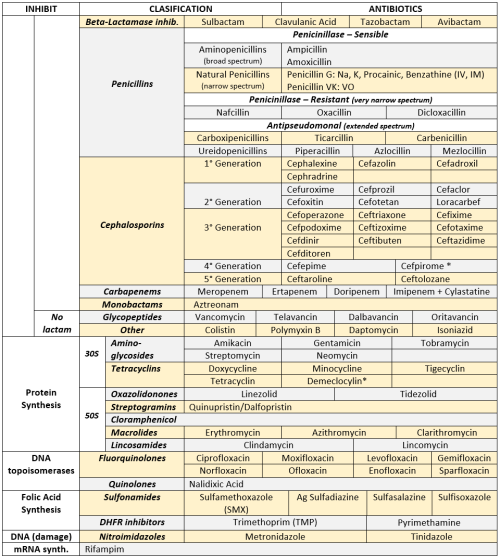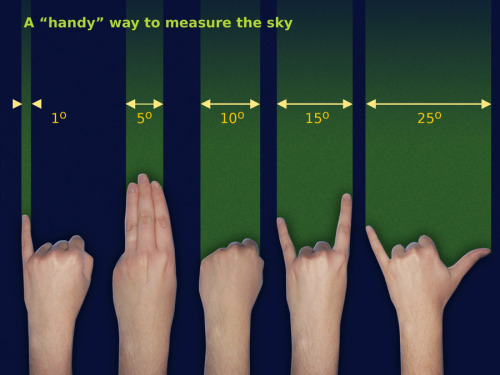Bacterias & Tx


Bacterias & Tx
Hi guys, just wanted to let you know that I did this really fast, so if there’s something wrong let me know! thanks :)
More Posts from Fuadalanazi and Others

“Sequence VR" was exhibited at the V & A Museum in London, as part of the London Design Festival. A new immersive virtual reality experience has been created using an Oculus Rift as part of “Sequence” using the data and footage from the project. It was shown alongside a series of objects and artefacts created during the project including live bacteria. The exhibit was accompanied by a participatory DNA extraction/preparation workshop where Dumitriu was joined by Dr Nicola Fawcett from the Modernisng Medical Microbiology Project. The event took place on 25th - 27th September 2015. See more information here.

ANTIBIOTICS CHEAT SHEET :)
Also, REMEMBER!!!!
* Sulfonamides compete for albumin with:
Bilirrubin: given in 2°,3°T, high risk or indirect hyperBb and kernicterus in premies
Warfarin: increases toxicity: bleeding
* Beta-lactamase (penicinillase) Suceptible:
Natural Penicillins (G, V, F, K)
Aminopenicillins (Amoxicillin, Ampicillin)
Antipseudomonal Penicillins (Ticarcillin, Piperacillin)
* Beta-lactamase (penicinillase) Resistant:
Oxacillin, Nafcillin, Dicloxacillin
3°G, 4°G Cephalosporins
Carbapenems
Monobactams
Beta-lactamase inhibitors
* Penicillins enhanced with:
Clavulanic acid & Sulbactam (both are suicide inhibitors, they inhibit beta-lactamase)
Aminoglycosides (against enterococcus and psedomonas)
* Aminoglycosides enhanced with Aztreonam
* Penicillins: renal clearance EXCEPT Oxacillin & Nafcillin (bile)
* Cephalosporines: renal clearance EXCEPT Cefoperazone & Cefrtriaxone (bile)
* Both inhibited by Probenecid during tubular secretion.
* 2°G Cephalosporines: none cross BBB except Cefuroxime
* 3°G Cephalosporines: all cross BBB except Cefoperazone bc is highly highly lipid soluble, so is protein bound in plasma, therefore it doesn’t cross BBB.
* Cephalosporines are "LAME“ bc they do not cover this organisms
L isteria monocytogenes
A typicals (Mycoplasma, Chlamydia)
M RSA (except Ceftaroline, 5°G)
E nterococci

* Disulfiram-like effect: Cefotetan & Cefoperazone (mnemonic)
* Cefoperanzone: all the exceptions!!!
All 3°G cephalosporins cross the BBB except Cefoperazone.
All cephalosporins are renal cleared, except Cefoperazone.
Disulfiram-like effect
* Against Pseudomonas:
3°G Cef taz idime (taz taz taz taz)
4°G Cefepime, Cefpirome (not available in the USA)
Antipseudomonal penicillins
Aminoglycosides (synergy with beta-lactams)
Aztreonam (pseudomonal sepsis)
* Covers MRSA: Ceftaroline (rhymes w/ Caroline, Caroline the 5°G Ceph), Vancomycin, Daptomycin, Linezolid, Tigecycline.
* Covers VRSA: Linezolid, Dalfopristin/Quinupristin
* Aminoglycosides: decrease release of ACh in synapse and act as a Neuromuscular blocker, this is why it enhances effects of muscle relaxants.
* DEMECLOCYCLINE: tetracycline that’s not used as an AB, it is used as tx of SIADH to cause Nephrogenic Diabetes Insipidus (inhibits the V2 receptor in collecting ducts)
* Phototoxicity: Q ue S T ion?
Q uinolones
Sulfonamides
T etracyclines

* p450 inhibitors: Cloramphenicol, Macrolides (except Azithromycin), Sulfonamides
* Macrolides SE: Motilin stimulation, QT prolongation, reversible deafness, eosinophilia, cholestatic hepatitis
* Bactericidal: beta-lactams (penicillins, cephalosporins, monobactams, carbapenems), aminoglycosides, fluorquinolones, metronidazole.
* Baceriostatic: tetracyclins, streptogramins, chloramphenicol, lincosamides, oxazolidonones, macrolides, sulfonamides, DHFR inhibitors.
* Pseudomembranous colitis: Ampicillin, Amoxicillin, Clindamycin, Lincomycin.
* QT prolongation: macrolides, sometimes fluoroquinolones
Magnified Photos of Creepy Crawlies

Colorado Potato Beetle magnified 100x. ‘As you might infer from its name, this bug loves potato crops and destroys plenty of them (and sometimes eggplant and tomato crops, too).‘

A schistosome parasite magnified 256x. This parasite ‘can penetrate the skin of people who come into contact with contaminated water. After several weeks, the parasites mature into adult worms, which live and produce eggs in blood vessels.’

‘Looks kind of like a sloth, doesn’t it? A sloth that climbs through your hair (and sometimes your eyebrows and eyelashes) laying eggs. Adult lice are just 2 to 3 mm long; this one has been magnified 200 times.’

This capture of a Bed Bug ‘shows the insect’s mouthparts, which it uses to pierce skin and drink your blood while you sleep.’

The infamous Water Bear, also known as a tardigrade, is much less adorable in real life than it is in many people’s imagination. But no matter how cute you find them, they’re indisputably badasses of nature, showing the ability to survive the vacuum of space.
See more magnified creepy crawlers at Mental_Floss
A Basic Demonstration of Optical Cloaking (by UniversityRochester)

Measuring the sky, the handy way.
Source: Free Astronomy Teaching Resources (Starry Night)
http://www.youtube.com/embed/TS0zA6DSfvk?feature=oembed
الرقية الشرعية الشاملة فارس عباد 1 (by netter2cool)
(via https://www.youtube.com/watch?v=eP085YW60D8)
-
 seowens88 liked this · 1 year ago
seowens88 liked this · 1 year ago -
 littlestgirlbleu liked this · 2 years ago
littlestgirlbleu liked this · 2 years ago -
 scenteddeerpizza liked this · 2 years ago
scenteddeerpizza liked this · 2 years ago -
 vonbirkenhoff liked this · 2 years ago
vonbirkenhoff liked this · 2 years ago -
 emmlg liked this · 3 years ago
emmlg liked this · 3 years ago -
 countessy liked this · 4 years ago
countessy liked this · 4 years ago -
 devinfreetime liked this · 5 years ago
devinfreetime liked this · 5 years ago -
 lilies-96 liked this · 5 years ago
lilies-96 liked this · 5 years ago -
 brendasarahy liked this · 6 years ago
brendasarahy liked this · 6 years ago -
 sweet-wake-up liked this · 6 years ago
sweet-wake-up liked this · 6 years ago -
 vklselva-blog liked this · 6 years ago
vklselva-blog liked this · 6 years ago -
 rainapathetic liked this · 6 years ago
rainapathetic liked this · 6 years ago -
 kowalski-lestrange reblogged this · 6 years ago
kowalski-lestrange reblogged this · 6 years ago -
 doctordin-blog liked this · 6 years ago
doctordin-blog liked this · 6 years ago -
 bubblyhappylively liked this · 6 years ago
bubblyhappylively liked this · 6 years ago -
 introspection9 reblogged this · 6 years ago
introspection9 reblogged this · 6 years ago -
 introspection9 liked this · 6 years ago
introspection9 liked this · 6 years ago -
 learninglifestuffsworld-blog liked this · 7 years ago
learninglifestuffsworld-blog liked this · 7 years ago -
 medicokrish-blog liked this · 7 years ago
medicokrish-blog liked this · 7 years ago -
 suspirando-en-tu-honor liked this · 7 years ago
suspirando-en-tu-honor liked this · 7 years ago -
 sa4622 liked this · 7 years ago
sa4622 liked this · 7 years ago -
 newmescience-blog liked this · 7 years ago
newmescience-blog liked this · 7 years ago -
 medt-vytrova-blog reblogged this · 7 years ago
medt-vytrova-blog reblogged this · 7 years ago -
 ibkhayyat liked this · 7 years ago
ibkhayyat liked this · 7 years ago -
 mrsbrown1217 liked this · 7 years ago
mrsbrown1217 liked this · 7 years ago -
 mleomb1 liked this · 7 years ago
mleomb1 liked this · 7 years ago -
 c-r-u-c-i--o liked this · 7 years ago
c-r-u-c-i--o liked this · 7 years ago -
 ayakir876 reblogged this · 7 years ago
ayakir876 reblogged this · 7 years ago -
 kaidoseai-blog reblogged this · 7 years ago
kaidoseai-blog reblogged this · 7 years ago -
 yeou99-blog reblogged this · 7 years ago
yeou99-blog reblogged this · 7 years ago -
 yeou99-blog liked this · 7 years ago
yeou99-blog liked this · 7 years ago -
 anteanteuniverse-blog reblogged this · 7 years ago
anteanteuniverse-blog reblogged this · 7 years ago -
 soliriopuro-14-blog liked this · 7 years ago
soliriopuro-14-blog liked this · 7 years ago -
 anastasiasonghx-blog reblogged this · 7 years ago
anastasiasonghx-blog reblogged this · 7 years ago -
 oxyuria liked this · 7 years ago
oxyuria liked this · 7 years ago -
 littlehyperkiddo liked this · 7 years ago
littlehyperkiddo liked this · 7 years ago -
 maureenguaves-blog liked this · 7 years ago
maureenguaves-blog liked this · 7 years ago -
 lord-7 reblogged this · 7 years ago
lord-7 reblogged this · 7 years ago -
 lord-7 liked this · 7 years ago
lord-7 liked this · 7 years ago